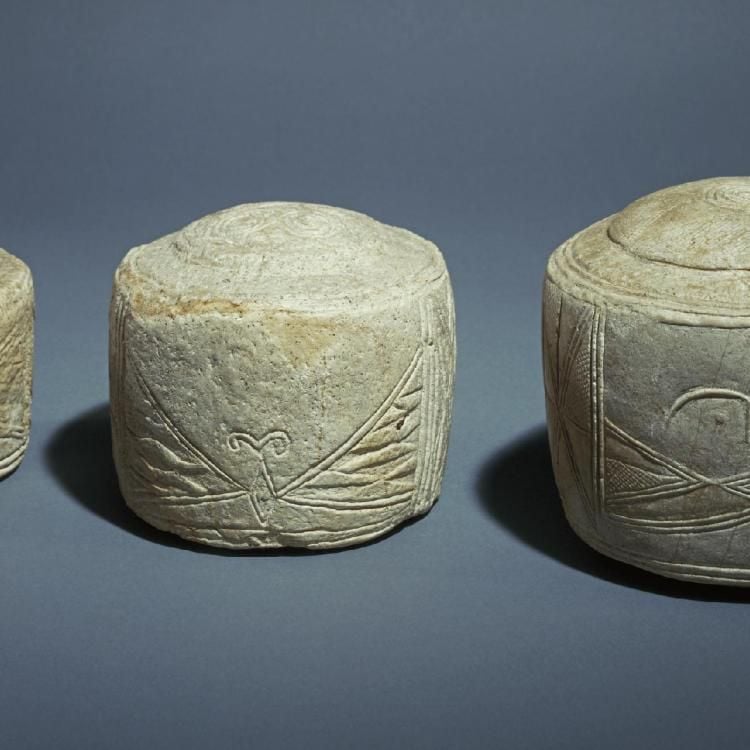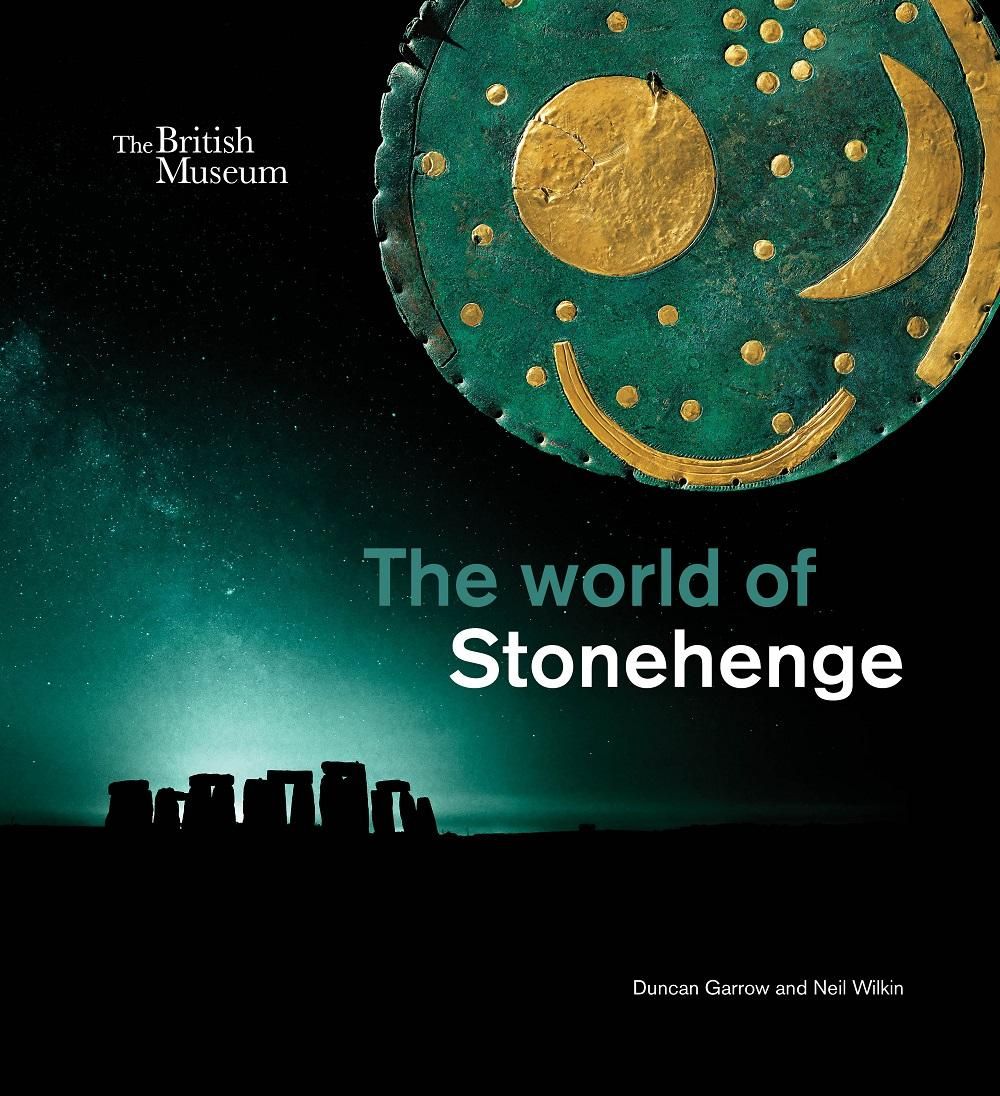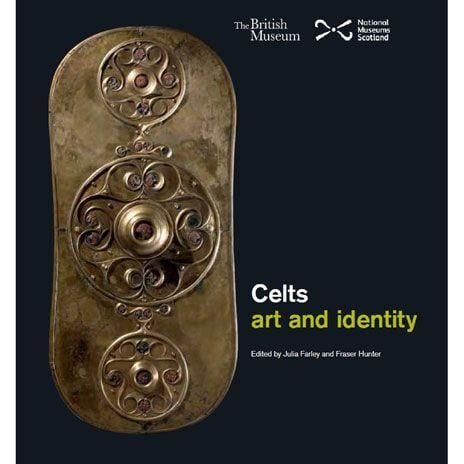Contact details
Email: [email protected]
Phone: +44 (0)20 7323 8629
Department of Britain, Europe and Prehistory
The British Museum
London
WC1B 3DG
The Department of Britain, Europe and Prehistory covers the archaeological, historical and traditional material culture of Europe beyond the Mediterranean world, especially Britain.
Objects in the collection cover a vast expanse of time and include:
- Stone tools that reveal pathways of human evolution and spread through Africa, South Asia, the Middle East and Europe from about two million years ago.
- Sculptures and engraved drawings that depict animals from the last Ice Age in Europe, 40,000 – 10,000 years ago.
- Objects that highlight the spread and establishment of farming and metalworking in Britain from Europe around 8,000 years ago.
- Military and civilian items, including letters and inscriptions, that tell the story of Britain from the Roman Conquest of Britain in 43 AD through its four centuries as a colony of the Roman Empire.
From pots and tools to Cartier jewellery and clocks from the 5th century AD to the present day, the collection illustrates many aspects of British and European history, and their relationships with other parts of the world.
The department plays a leading role in collecting and making the nation's past accessible through its public and research activities. Its work is also connected with finds of Treasure from England and supports the work of the Portable Antiquities Scheme.
Staff
- Sophia Adams – Curator: Europe First Millennium to Roman Conquest
- Nick Ashton – Curator: Palaeolithic and Mesolithic Collections
- Sue Brunning – Curator: Early Medieval European Collections
- Jill Cook – Keeper: Department of Britain, Europe & Prehistory, specialist in Ice Age art
- Oliver Cooke – Curator: Horology
- Robert Davis – Project Curator, Pathways to Ancient Britain
- Richard Hobbs – Curator: Roman British and Late Roman Collection
- Rachel King – Curator: Renaissance Europe and the Waddesdon Bequest
- Claire Lucas – Project Curator, Europe 40,000–10,000 years ago
- Elisabeth O'Connell – Curator: Byzantine World
- Aaron Rawlinson – Project Curator, Digital Technologies and Acheulean Handaxes
- Naomi Speakman – Curator: Medieval Collections
- Laura Turner – Curator: Horological Collections
- Neil Wilkin – Curator: Europe 8,000–1,000 years ago
- The work of the department is supported by a team of Collection Managers and administrative staff.
You can search for publications by specific staff members on the British Museum Research Repository.
Research
Research at the Museum drives the care, display and understanding of the collection. Our research creates new knowledge, often through collaboration and by using cutting edge technology. Research projects, studentships and other activities cover a wide variety of academic disciplines and can involve archaeological excavation, studies of museum collections, working with craftspeople, understanding our visitors, conservation and scientific investigations.
The Department of Britain, Europe and Prehistory curates over two million artefacts ranging from some of the oldest known stone artefacts from Africa and Asia to a digital wrist watch. As a result, research activities are varied and include:
- Detailed object research
- Archaeological excavations
- Research for exhibitions
- Publishing books and articles about the collection
- Investigating Treasure finds and sites.
This research covers a period that stretches from the earliest human occupation of Britain to the formation of settled societies, agriculture, metalworking, trade links and urban governance. We collaborate with colleagues across the Museum and with academic institutions in the UK and around the world.
Curators in the department present their research in a wide range of scholarly publications, exhibitions, blogs and videos as well as regularly giving academic and public lectures. The Department is working to digitise the collection so that external scholars and the general public have full access to the records on Collection online.
History of the collection
In 1753, Sir Hans Sloane's founding collection contained relatively few antiquities and by the end of the 18th century the Trustees favoured the acquisition of objects from the world's great civilisations being held together in a Department of Antiquities.
A review of the Museum by a Royal Commission in 1850 promoted the collection of national antiquities and led to the appointment of Augustus Wollaston Franks the following year, ushering in a new era of collecting British artefacts just as interest in archaeology, human evolution and antiquity was taking off.
When naming the British Museum, Parliament did not have its contents in mind but rather the political reunion of Britain following the suppression of the Scottish uprising in 1745.
Development
Development
Franks started collecting material from the deep past, Roman Britain and subsequent periods to the present. Objects came from excavations such as those directed by Henry Christy and Edouard Lartet in southwest France, and by Canon Greenwell who excavated over 300 burial mounds in the north of England and discovered the 4,500-year-old flint mines at Grimes Graves in Norfolk.
Franks also acquired objects from Sir Charles Roach Smith's collection of Roman British antiquities and made numerous purchases from contacts across Europe. With the collection expanding, Franks became head of a new Department of British and Medieval Antiquities and Ethnography in 1866. Through several structural changes this became the Department of Britain, Europe and Prehistory in 2014.
Acquisitions and holdings
Acquisitions and holdings
The department has collections which attest to some two million years of human achievement. Expertise in the archaeology of human origins and support for excavations of early sites around the world provides a significant international resource.
Major gifts such as the Sutton Hoo ship treasure, the Waddesdon Bequest of Renaissance masterpieces and the Hull Grundy Bequest of jewellery alongside famous purchased historical objects such as the Lewis chess pieces, the medieval Royal Gold Cup or, most recently, the 3,000-year-old Shropshire gold pendant enhance the galleries and attract students to the Study Room.
Numerous artefacts from the Museum's own excavations in England, such as the Hinton St Mary mosaic from Dorset, have also created a major national archaeological resource. In addition, Franks made the first acquisition of notable clocks and watches from Sir Charles Fellows in 1874, establishing a distinguished horology section further enhanced by the collections of Octavius Morgan and Courtney Adrian Ilbert.
Collecting now has a contemporary focus, with the collection including face masks from the COVID-19 pandemic, Sir Grayson Perry's Rosetta Vase reflecting the contemporary museum and ceramics by Dame Magdalene Odundo celebrating the diversity of British society. Twentieth-century history is also represented through objects such as plates dating from the Russian Revolution and artefacts from traditional European communities.
























